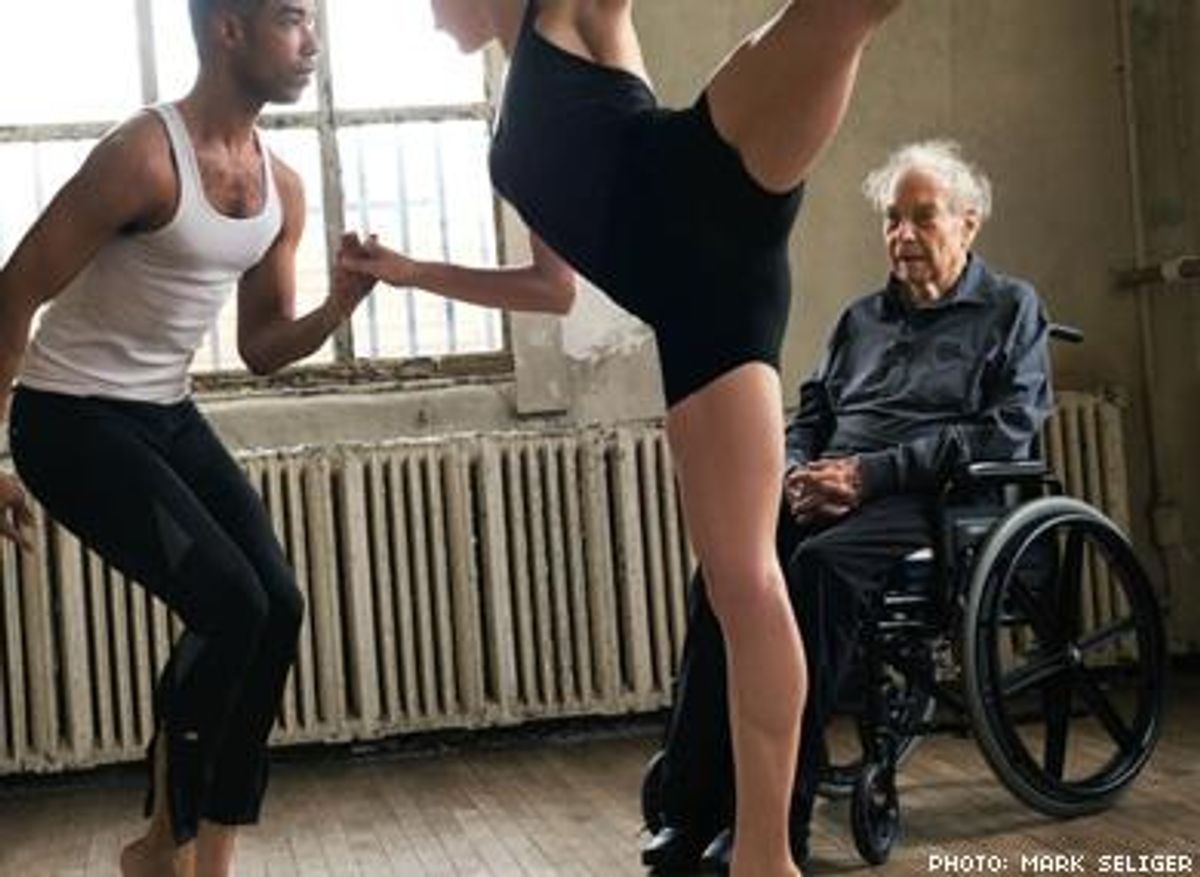
Nonagenarian Merce Cunningham still wows the crowd in Brooklyn with his latest show, Nearly Ninety.
April 20 2009 12:00 AM EST
November 17 2015 5:28 AM EST
By continuing to use our site, you agree to our Private Policy and Terms of Use.

Nonagenarian Merce Cunningham still wows the crowd in Brooklyn with his latest show, Nearly Ninety.
George Balanchine and Merce Cunningham are the two greatest choreographers of the 20th century -- yet polar opposites in method, style, and relation to music. But Cunningham is still alive and making new dances in the 21st century. Being wheelchair-bound hasn't curbed him at all.
His latest (and possibly last) work is called Nearly Ninety and was premiered on his 90th birthday at the Brooklyn Academy of Music on April 16. It's a major, evening-length work featuring music by Led Zeppelin's John Paul Jones, Sonic Youth, and Takehisa Kosugi; costumes by Romeo Gigli, sets by Benedetta Tagliabue, and video projections by Franc Aleu -- and, of course, the 14 brilliant dancers that make up his stellar troupe. The place was packed, with the famous and anonymous, the old and the young, dance and Merce lovers all.
The silhouette of an enigmatic structure you can't quite make out fills a scrim behind which it hides; Asiatic timbres produced by Western electric guitars and drum-set cymbals hang in the air, amplified yet delicate. Soon lithe bodies in tight-fitting white and blue-gray unitards are moving in strange, captivating ways -- the mesmerizing configurations Cunningham has been cooking up for decades through the use of chance procedures he gleaned from his longtime partner and creative collaborator, John Cage (who died in 1992). For the past 10 years he's furthered his technique with computer software called DanceForms.
Cunningham's body language is pristine and otherworldly -- abstractions of classic dance positions, hieroglyphic friezes, semi-robotic gestures, statuesque freeze frames, slo-mo yoga contortions, ecstatic repetitions, and noble stillness drawn from the animal kingdom. The dancers perform these in myriad combinations. Rotating architectural renderings are projected onto the scrim, one of which looks like an orbiting satellite, adding to the lunar dimension of the proceedings.
When the scrim eventually lifts, you see the source of those crazy shadows: a kind of space station (designed by Tagliabue) fashioned from a commotion of aluminum tubes, jutting staircases, and thrusting platforms on which the musicians perform. In spite of the rock talent, the score is no more "accessible" than the other electronic or "musique concrete" scores of Cunningham's Cage days. It's a stream of noises made from scratching guitar strings, crashing cymbals, and electronics further transformed through "live electronics." There's no singing or words, just some screaming.
As in all Cunningham, dance is a parallel universe, created independently of the music flow. At this point in his career, he might have shocked by matching steps to a melody or beat. No go. Cunningham is too much of a purist, consistent with a style that's his and his alone. His dances are of such exquisite, distilled beauty and tell no story except that of bodies -- their mysteries, attractions, and interactions. With Cunningham there's always a kind of apotheosis of human anatomy. His dancers are creatures of astounding flexibility, balance, and poetry, especially veteran Holley Farmer and relative newcomer Rashaun Mitchell.
The audience was on its feet wildly applauding when Cunningham was wheeled onstage, joy beaming from his face. He's still a fascinating faun. Nearly Ninety may not be a masterpiece, but it is certainly great.
Want more breaking equality news & trending entertainment stories?
Check out our NEW 24/7 streaming service: the Advocate Channel!
Download the Advocate Channel App for your mobile phone and your favorite streaming device!